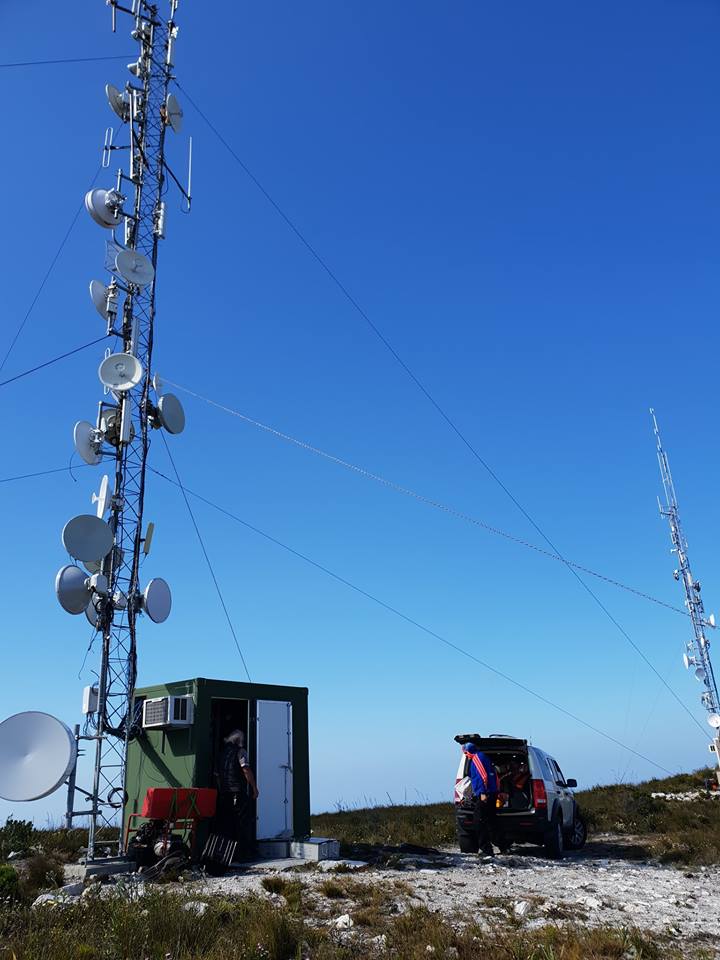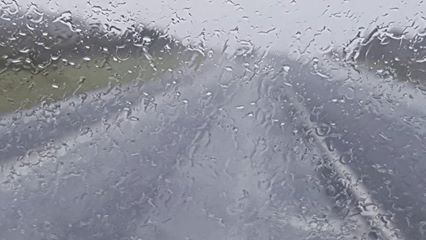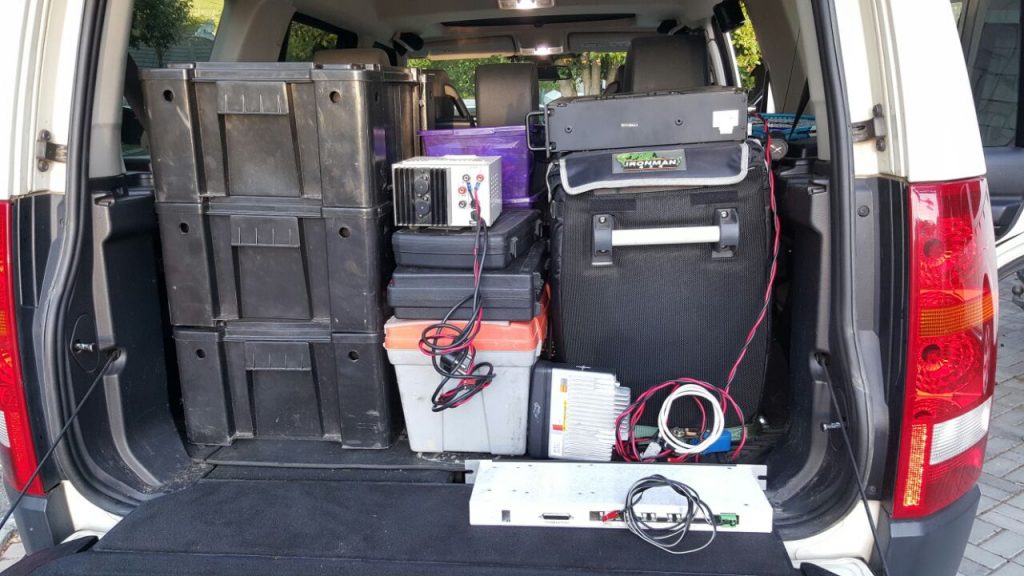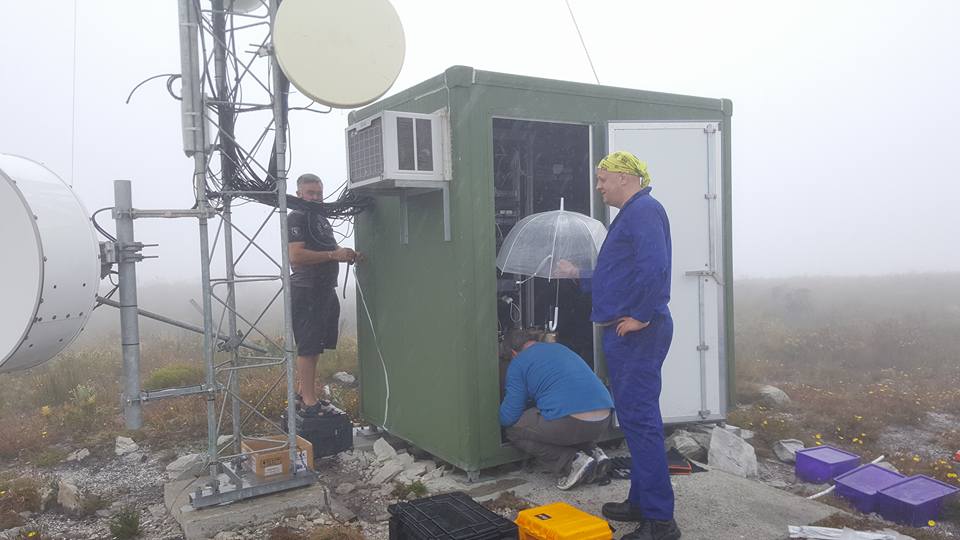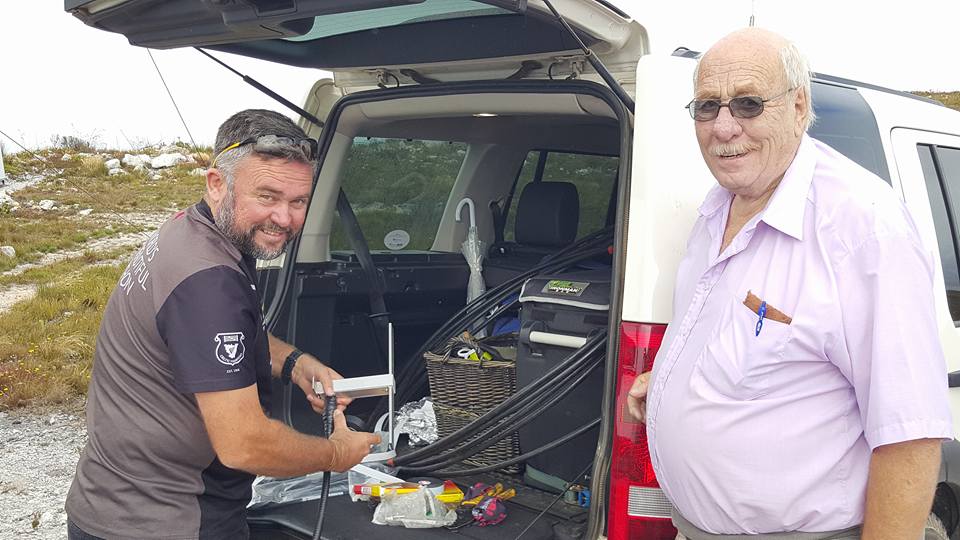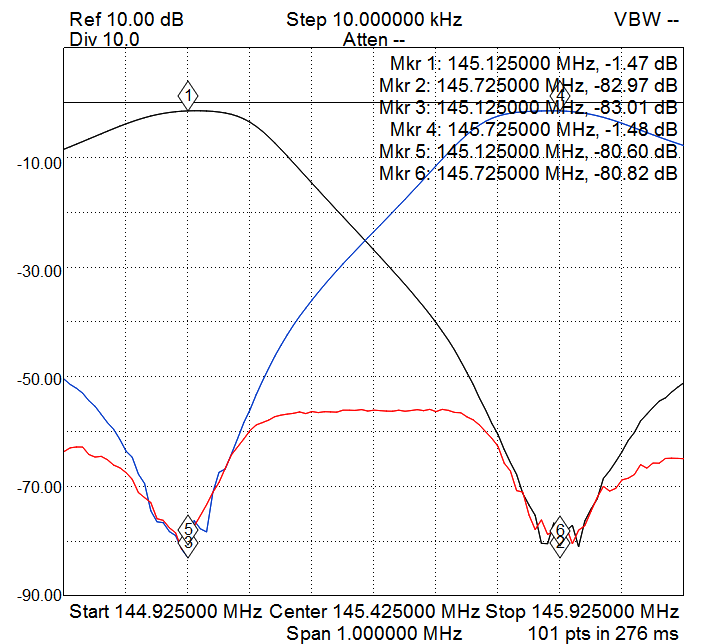On 17 December 2022, a project which has been in the making since August came to fruition.
The high site which previously hosted the 145.725 MHz Onrusberg repeater since late 2016 was taken over by new management. This marked the end of good relationship over many years. The farm on which the Onrusberg high sites are located also got a new owner, further complicating matters.
After some investigation, negotiations and leveraging of existing relationships, a new high site became available.
The started a string of visits (anything between 250 km and 300 km per trip), hours of planning and preparations (including a few trips to buy and pickup stock).
First was a site inspection by ZS1TAF and ZS1V.
During a second visit (4 October) the antennas (folded dipole for VHF and dipole for UHF) were installed on the mast by ZS1TAF, ZS1V and ZS1YT. This was a long and complicated day, as this was not an easy tower to climb and work on. Thanks go especially to ZS1TAF for the donations towards antenna pole and brackets. Over 60m of half inch EC4-50 feedline was installed.
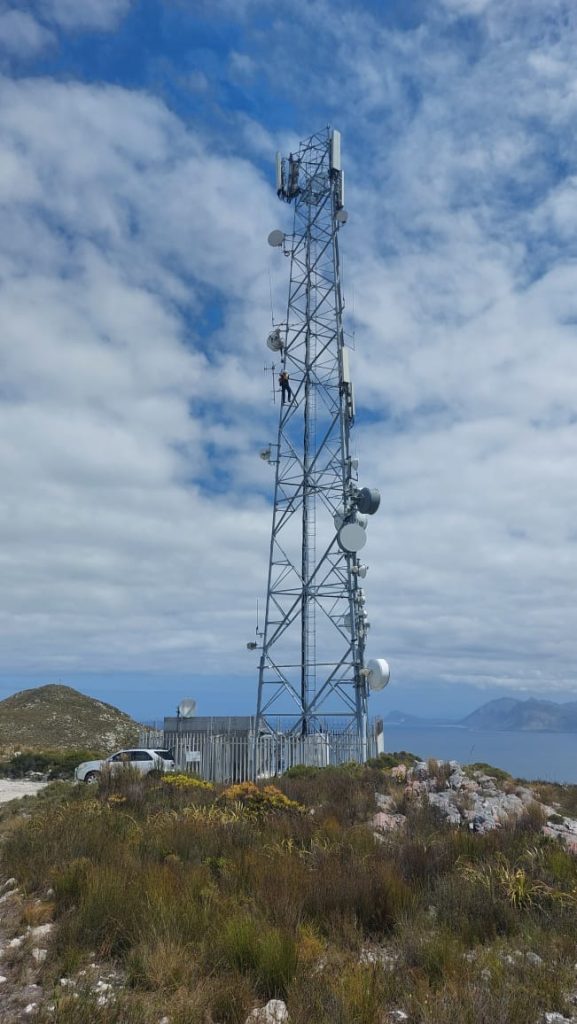
Third visit (19 November) was cabinet, cable trays and power articulation by ZS1DDK, ZS1TAF and ZS1YT.
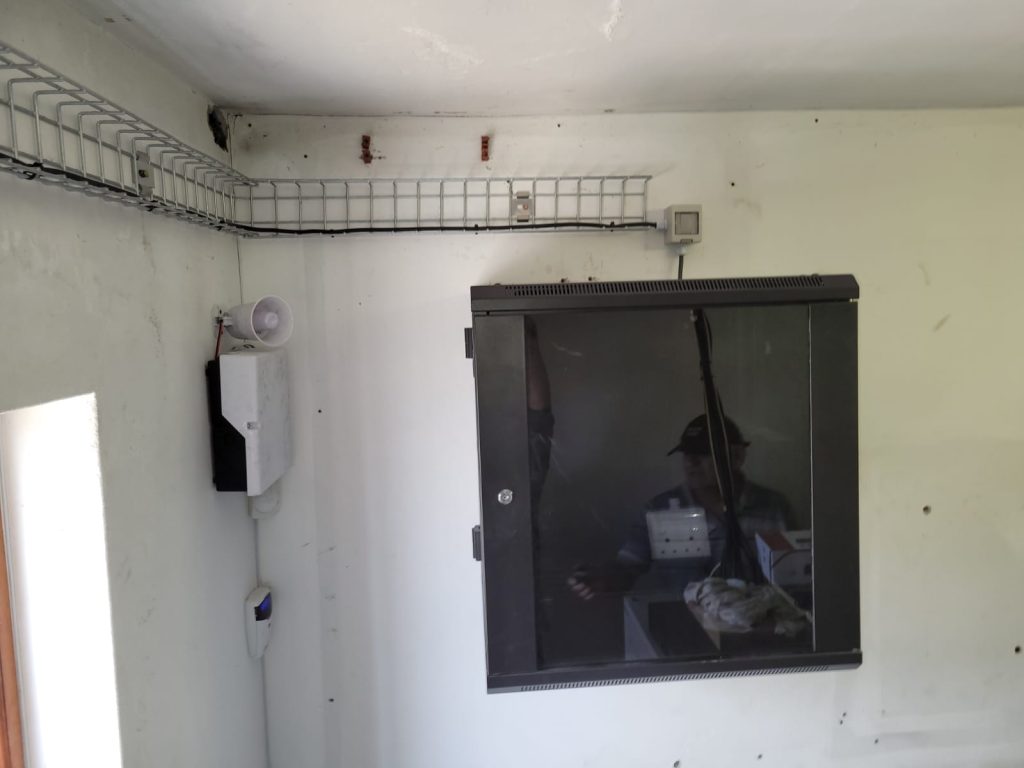
Preparation for the fourth site visit was still going strong until 01:00 on the day of the visit. The morning continued at 05:30 and packing all the equipment for the installation and possible eventualities required detailed planning.
ZS1MTF arrived at 07:00and there was just enough space in the double cab bakkie for all the required equipment (2 toolboxes, 8 ammo crates, test equipment, ladder, duplexer, repeater, link controller, link radio, power supply, charger, transfer box, battery, among many other items).
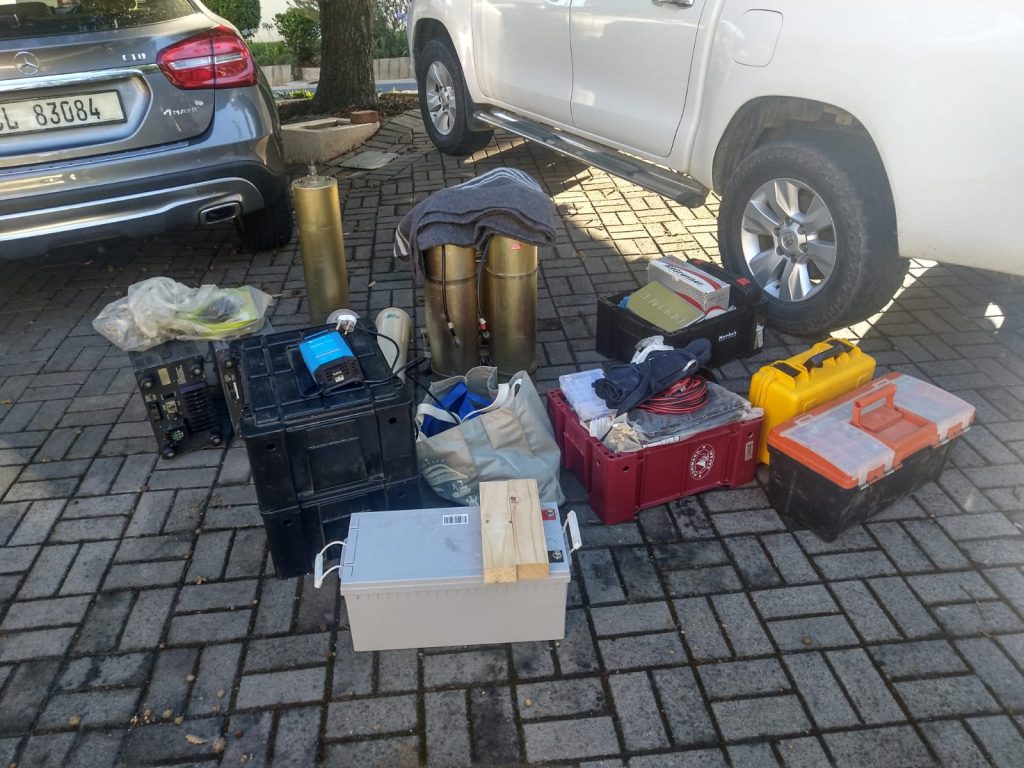
ZS1Z and ZS1MTF arrived on site at 09:15. The mist and clouds was thick, with visibility as poor as 5m at times.
After this, the layout of the cabinet and all DC wiring was completed. The DC system includes a 20A linear power supply, a 200 A/H battery, a 30 A charger, an automating transfer switch, and low and over voltage protection box (donated by ZS1EQ), fuse boxes and lots of crimps, power poles connectors and cable. LoRaWAN based telemetry was also installed.
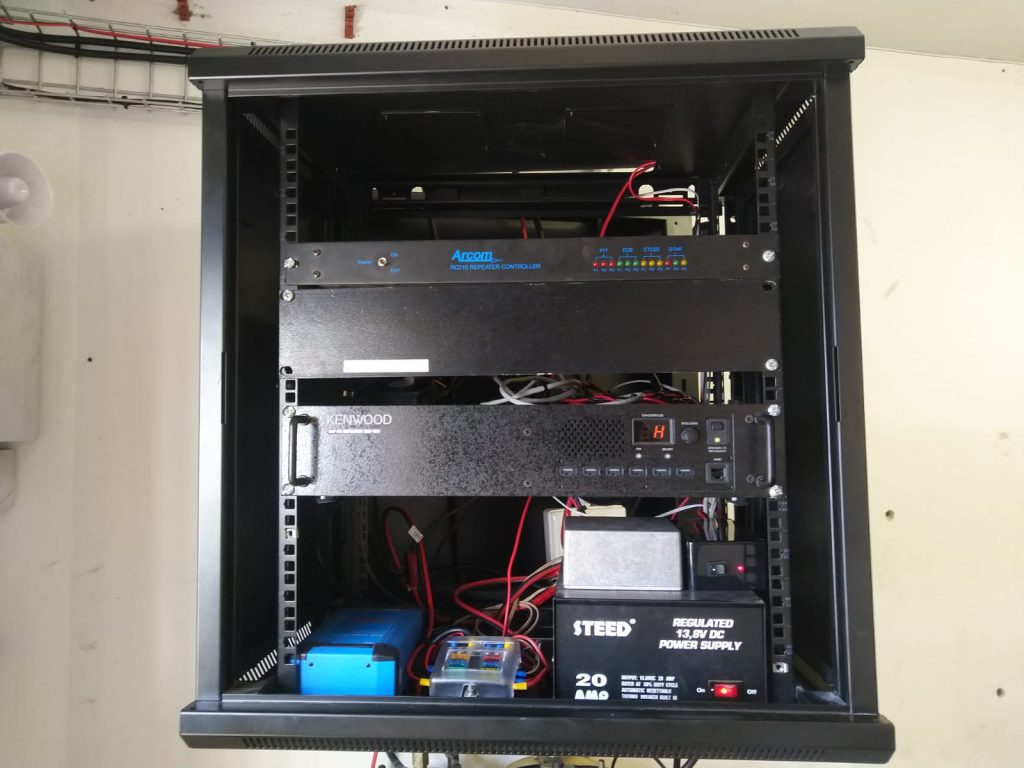
Next the link controller cabling and sensors were installed.
Lightning protection was installed and new RG214 patch leads were made up and installed for the last section of the run from the antennas. This is always something which takes much longer that expected and uses many more cable ties.
Next the duplexer was installed on the wall. The bracket on the duplexer made it very uncomfortable process. Great care must be taken when handling the cavity filters as the duplexer had more than 10 hours of setup in it alone. The harness is the correct one for the amateur 2m band, and some of the cans have some age on them, and do not want to adjust without some persuasion, all of which complicates tuning. A one port circulator (isolator and bandpass filter), was also installed
Crimping of all internal coax and patch leads (RG223) followed. The double shielded coax crimping must be done with great care.
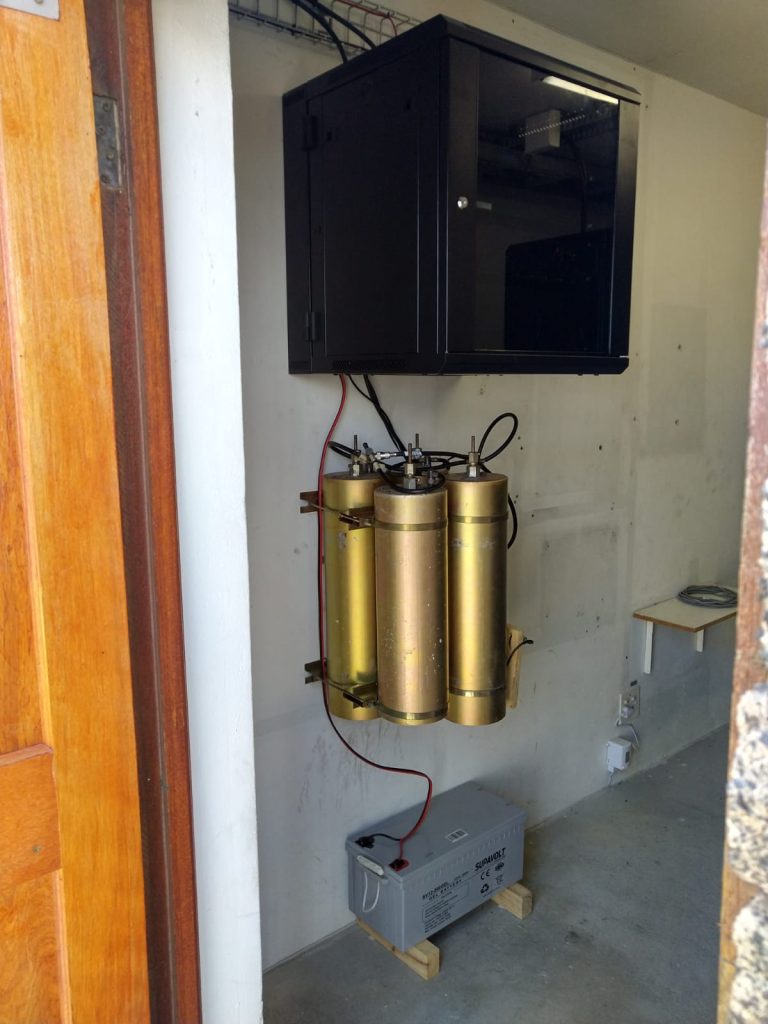
The antenna SWR was checked and found to be in order although the VHF was at 1.5:1, somewhat higher than the expected 1.3:1, and will be investigated on a future visit. The UHF link was at the expected 1.1:1. All outside connections was sealed Scotch 23 and electrical tape (Nitto). The cable trays were closed again with all stainless-steel straps reinstalled and some extra cable tie straps for extra ease of mind.
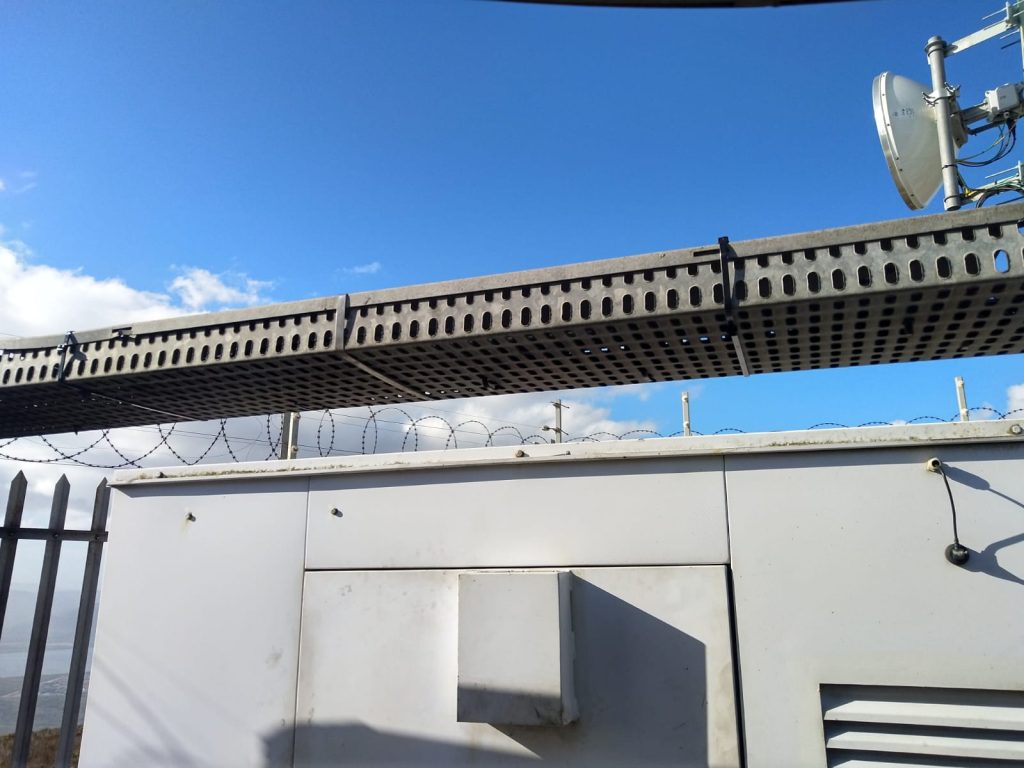
Some radio checks were completed with ZS1L and ZS1YT.
The road home was clear but long, after dropping of all the keys and unpacking the vehicles everyone was home by 22:00.
This concluded the move and upgrade to include backup power and circulator.
As with any move of this magnitude, some small gremlins may pop up, please report as per the weekly status reports. Thank you for all the support.

